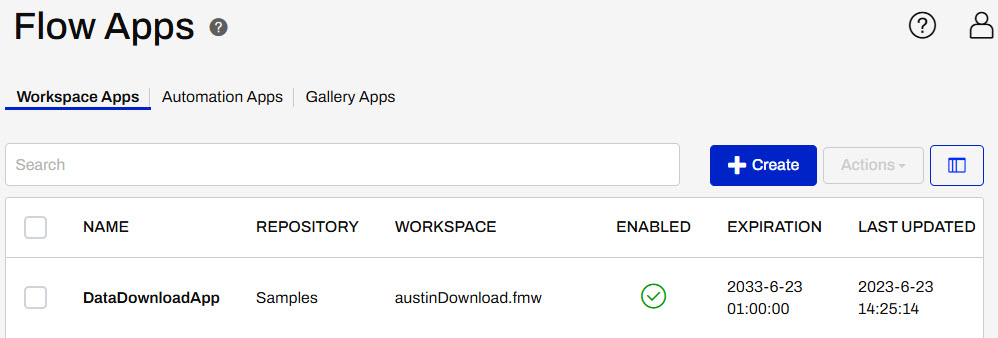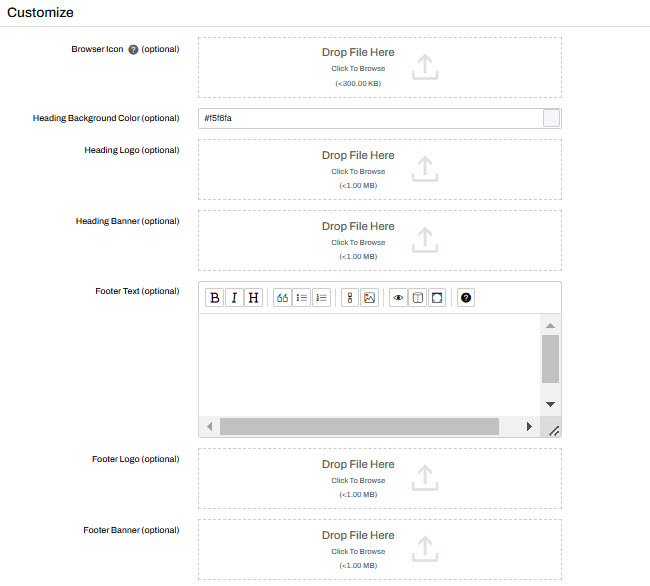After completing this lesson, you’ll be able to:
Sharing a repository is an excellent option for sharing workspaces with other users who also have access to FME Flow, but what if you want to allow anyone to be able to submit a job without needing to have an account on FME Flow?
This can be accomplished using FME Flow Workspace Apps. You can create an FME Flow App by clicking on Flow Apps from the FME Flow Menu:
To manage FME Flow Apps, click on Manage Workspace Apps. From here, you can manage all your existing apps and create new ones.

When creating a new Flow App, you will be able to select which workspace you would like your app to run and also set an expiration date for the app. This is useful if you would like to temporarily share the app, and then disable it after a set period of time.
Require Authentication is turned off for this app which allows anyone with the link to run the Flow App without needing to log in to FME Flow. When Require Authentication is enabled, you may limit which users and roles can access and run the app for increased security of your workflow.
Next, you can select which Published Parameters you would like to be displayed for your end-users to set when they use your Flow App:
Finally, you can customize the appearance of your Flow App by changing the background color, and adding logos, icons, and banners.

When you are finished creating your App, an FME Flow App URL will then be generated. Anyone with that URL will be able to run the app without having to log into FME Flow first, provided they have access to the network where the FME Flow server is hosted. If the FME Flow server is publicly accessible (meaning it can be accessed over the internet), then users who are internal and external to the organization can access it.
The FME Flow App link will open up a simplified Run Workspace page:
View an example FME Flow App. This app provides a simple self-serve spatial data download service. By using a data distribution app to retrieve data, a user can download datasets for their selected area of interest. This can save users the tedious tasks of cleaning, transforming, and converting their data which will allow them to jump directly into the analysis phase.
